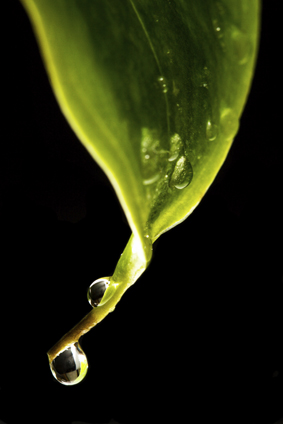WATER PURIFICATION
Clean water...on purpose; water purification. Nature does it best but we can follow her example and create sweet, clean, tasty water with some simple techniques.
First I have to say, water is suppose to be clean. A century ago most rivers and streams, away from man, were clean enough to drink from. What changed was an expanding population and the polluting effects of us.
There are still clean waterways in more remote areas, but they have become the exception not the rule. Most of us rely on clean, pure water coming out of our taps. Sometimes that H2O isn't even clean. I am not trying to scare you, just provide more choices for us to obtain clean water.
The reason for this web site is to show you how to clean or purify water. A lot of the methods are primitive. These ways of cleaning water are for when you have limited tools and or supplies on hand. I will also introduce you to more advanced cleaning procedures.
This site is intended as a one stop for all purification methods regardless of the water source.
There is not enough good information out there on how to clean water. Watching nature and how she cleans our water is a good start.
Mother Nature uses 3 main methods to clean our water.
1) Mass distillation. The sun evaporates huge volumes of water which then condenses at high altitudes (clouds) and finally produces rain.
2) Micro Biotic filter. Bacteria eats and breaks down contaminated water (liquids). Typically this type of filter is in soil or a similar medium. Water slowly passes through this bacterial rich environment, ending up essentially clean after the journey.
3) Fine sieve filter. Nature uses porous rock for this cleaning method. Lava, limestone and other "rocks with holes in them" all work the same way by straining out contaminants by a file filtering. Fine sand also works this way, however, this is where simply filtering crosses over with a micro biotic filter.
- A sand filter can work both as a micro biotic filter and a fine sieve filter. If depends on how you set it up.
Out of the three methods, my favorite way is distillation. It is natures preferred and most used method. You have heard of rain fresh, a term for pure water straight from the hands of Mother Nature. Providing there is no air bourne pollutants around you will get clean, tasty water.
WATER ON EARTH
Water is a combination of oxygen and hydrogen. This simple mix is essential for all known forms of life on our planet.
We all know water in it's liquid form, but it also exists as a vapor (steam) as sell as in a solid form (ice)
Water covers over 70% of the earths surface. The largest amount by a wide margin is in the oceans. They alone contain 97% of all of the surface water found. The remaining 3% of our surface water is found in streams, rivers, ponds, lakes, glaciers and the polar ice caps.
It is interesting to note that the atmosphere holds .001% water, as vapor (clouds), at any one time. That is the portion of moisture being cleaned by Mother Nature in it's continuous cycle of evaporation to rain.
70% of all clean or semi-pure water is used by agriculture to grow our food. As our population continues to grow, more water conservation methods are being brought into practice, both in farming and personal consumption. It is our ever increasing use of water that is helping to spearhead these techniques and methods into the way we live and consume water.
You will see more and more innovative water use and reuse ways being used by all of us now and in the future. It may by catching and using rain water or using gray water to water your garden.
A lot of us already use water saver shower heads or restrictors on our taps. Car washes reuse a lot of water in their operations. We can still use more water from our streams and rivers, but there is a limit. In this case it is better to use smarter rather than more.
|
